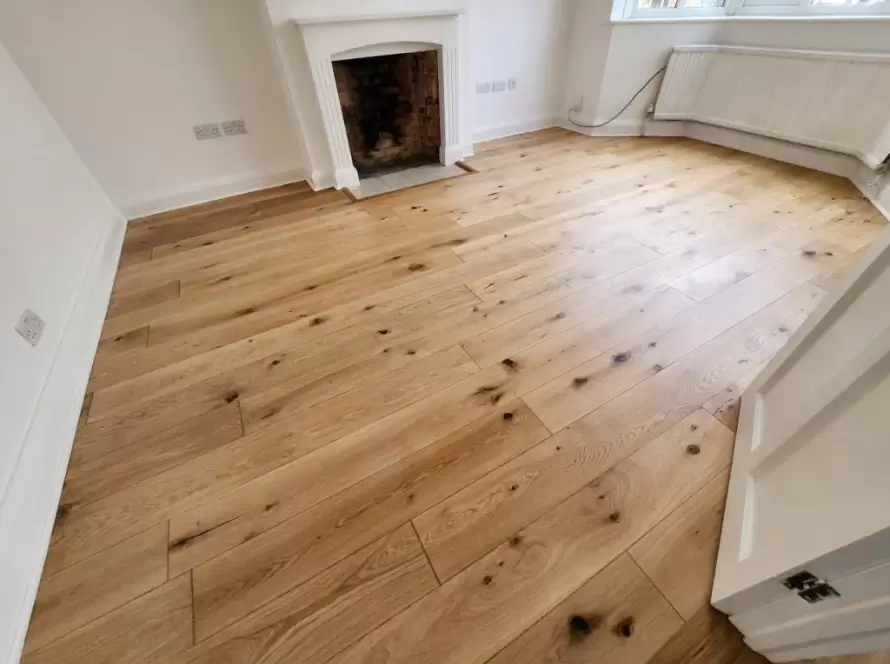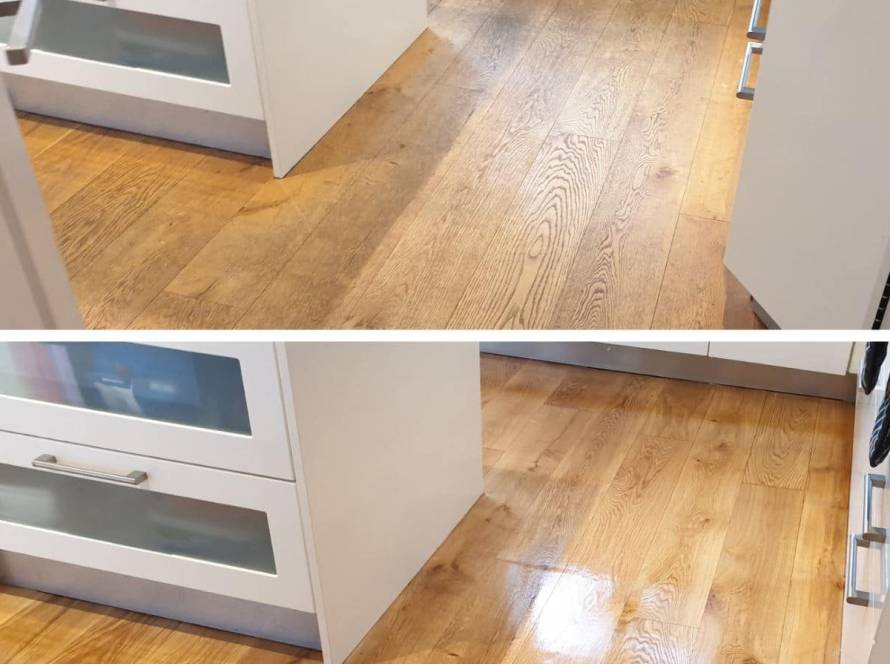Choosing between wood flooring and tiles can be challenging. Both options offer unique benefits, costs, and maintenance requirements, impacting the look, feel, and functionality of your space. Here, we’ll delve into the pros and cons of hardwood floors and tile flooring, covering essential factors like cost, durability, design, and maintenance to help you make an informed decision.
The Best Areas for Wood Floors vs. Tiles
Different spaces have distinct flooring needs based on factors like moisture levels, foot traffic, and aesthetics.
Wood Flooring
Ideal for living rooms, hallways, and bedrooms, wood floors provide a warm, luxurious look. However, they aren’t suitable for areas with high humidity or frequent temperature changes, like bathrooms, kitchens, and utility rooms.
Tile Flooring
Tiles, particularly porcelain with a water absorption rate below 0.5%, are highly resistant to moisture, making them perfect for bathrooms, kitchens, and entryways. Additionally, unglazed tiles offer better slip resistance than glazed options, which is beneficial for high-moisture areas.
Durability and Maintenance
Wood Flooring Maintenance
Wood floors require regular sweeping or vacuuming to keep dust and debris at bay. Spills should be wiped up immediately to prevent water damage, and refinishing may be needed every 7-10 years to restore shine and protect against wear. For the best results, we at Alpha Floor Sanding Ltd recommend using specialised wood care products and following our guide on maintaining hardwood floors.
Tile Flooring Maintenance
Tile floors are low-maintenance and can handle regular sweeping or vacuuming. Spills are easy to wipe away, but grout lines may require periodic cleaning and sealing to prevent stains. While tile is durable, heavy impacts can cause cracks, so replacement may be necessary if damaged.
Additional Factors to Consider
Underfloor Heating
Tiles, with their excellent thermal conductivity, are ideal for underfloor heating, quickly transmitting heat for a comfortable feel. Wood floors, on the other hand, can work with underfloor heating, but choosing a low-moisture, thermally stable wood is essential to avoid shrinking and reduced heating efficiency.
Noise Levels
Both wood and tile can be noisier than carpet, but wood flooring generally dampens sound better. To further reduce noise, consider adding area rugs or self-adhesive carpet tiles.
Slip Resistance
Wood floors tend to be less slippery, especially when dry, while glazed tiles may become slippery when wet. If choosing tiles, opt for unglazed or slip-resistant tiles in areas prone to spills.
Kids and Pets
For homes with children and pets, wood floors can be vulnerable to scratches and stains, but they provide a softer, warmer surface. Tiles are highly resistant to scratches and water, making them durable for active homes, though they can be slippery when wet. Slip-resistant tiles are a safer choice in areas with kids or pets.
Pros and Cons of Wood Flooring
Advantages
- Increases Home Value: Hardwood floors add significant value, with a return on investment of up to 80%.
- Warmth and Comfort: Wood naturally retains heat, providing a warm surface underfoot, especially in cooler months.
- Timeless Style: Wood floors blend effortlessly with various interior styles, ensuring longevity in design.
Disadvantages
- Higher Maintenance: Wood floors require regular cleaning and refinishing every 7-10 years to maintain their appearance.
- Cost: Wood is generally more expensive, both in terms of material and installation costs, and requires specialised products for upkeep.
Pros and Cons of Tile Flooring
Advantages
- Durability: Tiles are scratch and moisture-resistant, requiring minimal maintenance and lasting for decades with proper care.
- Cost-Effective: Tile flooring is generally more affordable than wood, both in terms of initial cost and maintenance.
- Easy to Clean: Tiles are simple to sweep and mop, with only periodic re-grouting needed to keep them looking fresh.
Disadvantages
- Cold Underfoot: Tiles do not retain heat, which can make them uncomfortable in cooler months.
- Slippery When Wet: Even slip-resistant tiles can be slick, especially in wet areas like bathrooms and kitchens.

FAQ
What flooring adds the most value to a home?
Hardwood floors tend to offer the best value for resale, with a potential return of up to 80%.
Is it better to have light or dark floors?
Light floors can conceal dust and minor imperfections, while darker floors are often preferred in larger spaces for a cosy feel.
Conclusion
Wood flooring and tile flooring each bring unique advantages, making the choice between them dependent on your specific needs, lifestyle, and aesthetic preferences. Wood provides warmth, a timeless look, and increased home value but requires more upkeep and care. Tiles offer durability, ease of maintenance, and suitability for high-moisture areas, though they can feel cold and hard underfoot. By considering factors like room function, maintenance, budget, and personal preference, you can make the best choice for a floor that enhances your space’s beauty and functionality.
For professional floor sanding, restoration, or maintenance advice on your wood floors, contact Alpha Floor Sanding Ltd – your trusted experts in hardwood floor care across London, Kent, and Surrey.




